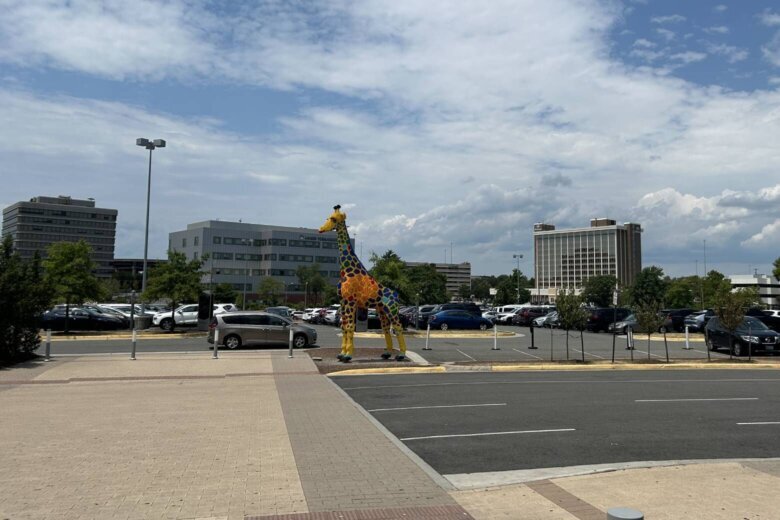The urban heat island effect is commonly associated with cities, but it can be found across the suburbs in areas that are getting developed.
Listen live to WTOP for the latest weather forecast on the 8s.
While temperatures have soared across the D.C. region for the last few weeks, it feels hotter in some neighborhoods than in those around them.
The urban “heat island” effect is a phenomenon that exists when there are many hard surfaces, such as street pavements, sidewalks, brick buildings and roofs. That makes for an environment “impervious to water, which makes good shelter, but it also absorbs a lot of the sun’s radiation and heat from the sun,” according to Julie Gabrielli, a clinical associate professor at the University of Maryland’s School of Architecture, Planning and Preservation.
“Then it just bakes it right back out in the air around that area,” she added.
These “heat islands” are usually found across major cities, where there’s a considerable amount of concrete but not a whole lot of greenery or shade, Gabrielli said. In D.C., according to the city’s Department of Energy and Environment, the urban heat island effect is making some neighborhoods nearly 17 degrees warmer than others.
The highest heat exposure scores, according to a D.C. Policy Center analysis last year, are in Wards 1, 5 and 6.
Overall, it’s not unusual for cities to be five to seven degrees warmer than their surrounding areas, according to Gabrielli.
The urban heat island effect is commonly associated with cities, but Gabrielli said it can be found across the suburbs in areas that are getting developed. In Northern Virginia, that includes Tysons and parts of Arlington.
“Taller buildings and transit-oriented development are really good in a lot of ways, because they keep us from sprawling out into further green areas in the far suburbs and it reduces people’s commuting time,” Gabrielli said. “But if it’s done in a way that does not give people places for respite, for shade, if there aren’t a lot of street trees or the occasional park, those areas are going to be hotter than the other neighborhoods that we’re more used to thinking of when we think of suburbs.”
Two years ago, as part of its Climate Adaptation and Resilience Plan, Fairfax County identified Tysons, Annandale, Chantilly, Centreville, Springfield and Herndon as areas where urban heat islands are “particularly prevalent.”
Neighborhoods such as Annandale have land surface temperatures over 120 degrees in the hottest months of the year, the document said. Meanwhile, greener neighborhoods report land surface temperatures under 80 degrees.
“As temperatures rise for all of us, these existing Urban Heat Islands will become even hotter than they are currently, worsening health risks for these communities,” the Fairfax County report said.
Maps of heat islands, if compared to historical maps, also “correlate with redlining and racist zoning and disinvestment. The same places that had the worst heat island effect are the most vulnerable populations and the least invested in,” Gabrielli said.
Localities are working to address that, she said, because “it’s really a justice problem as much as it is a public health problem.”
Many people are able to tell the difference when they’re in a heat island, Gabrielli said, especially if they’re in an area with little or no shade.
Near Springfield Town Center on Wednesday, a resident named Zenyep told WTOP she became familiar with the concept of urban heat islands through a climate justice course.
“It would make sense to call Northern Virginia a heat island,” she said. “I think Springfield, definitely. Whenever I’m walking even in my own neighborhood, I’m appalled at the lack of shade.”
Even those who were unfamiliar with the term weren’t surprised to learn Springfield has been feeling the urban heat island effect.
“I believe you,” a resident named Roland said. “It’s a thousand degrees today.”
Get breaking news and daily headlines delivered to your email inbox by signing up here.
© 2024 WTOP. All Rights Reserved. This website is not intended for users located within the European Economic Area.

